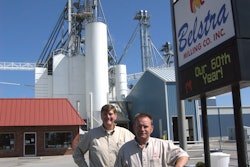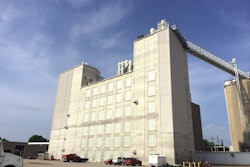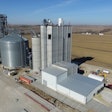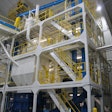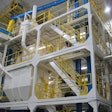Sanderson Farms, a fully integrated poultry producer, is committed to taking a fresh approach to everything it does, be it the implementation of new technology or the millions of pounds chicken it ships every week. The nation’s fourth largest poultry producer adheres to the same hometown values — honesty, integrity and innovation — that have been with it since the Sanderson brothers founded the company in 1947.
The company has more than 10,000 employees and over 770 independent growers. Its plants in Mississippi, Louisiana, Texas and Georgia process more than 8.125 million chickens per week. Its Mississippi processing facility produces an additional 1.72 million pounds of chicken products for the food service industry.
“[Sanderson Farms] doesn’t try to be the biggest, but we try to be the best,” says Sanderson Farm’s protein division manager Jack Smith. “Our goal every day is to be in the top 10% of our industry. When we come to work every day, if you ask any of our employees they’ll tell you that. That’s what we do, and that’s what we’re expected to do.”
According to Smith, the company chooses to control production of its poultry feed to ensure the quality of the nutrition the birds consume. Setting the company apart from its competition, Sanderson Farms has grown by building new operations rather than acquiring existing facilities.
“We have elected to build new complexes because it pays to have design and engineering controls in place to produce a feed product to very tight specifications,” says Bob "Pic" Billingsley, Sanderson’s director of development and engineering. “If we build the feed mill, the plant and hatchery to today’s standards with engineering and design and gives us an advantage in the plant by being able to implement modern environmental practices; improving employee welfare by creating an environment good for employees; and allows us to produce a product of the highest quality from a food safety standpoint.”
The move north
Sanderson operates six feed mills, seven hatcheries and nice processing plants strategically located throughout the southeast, but in early 2009, Sanderson Farms decided to explore unchartered territory by setting up operations in eastern North Carolina. To meet the growing demand for its products, the Laurel, Miss.-based company selected Kinston, NC for its $121 million effort to build a poultry processing plant, feed mill and hatchery.
“The move to Kinston was purely a marketing decision, we have an established customer base [retail accounts] on the east coast and as part of our commitment to quality and efficient service, it made sense for us to select a location in North Carolina to be able to respond to customer needs,” explains Billingsley.
The move north will also allows Sanderson the opportunity to target new business on the east coast by tapping into a new competitive marketplace.
Sanderson Farms has successfully entered into markets where it has little market share before, most notably in Texas in 1996; and Georgia in 2005. “We’ve been able to establish strong customer bases in otherwise untapped markets before, and we anticipate doing the same here Kinston,” says Billingsley.
Why Kinston? Billingsley explains: Sanderson Farms has a list of 50 points of interest in its site selection criteria. Potential plant sites are evaluated and scored based on data gathered touching on key items like the area’s contract grower base, sustainable, rail service and environmental concerns. The Kinston area scored favorably in many of these areas.
“We feel [Kinston is] the best location for our operation long term,” Billingsley explains.
General contractor Todd & Sargent began construction on the feed mill in the fall of 2009; and the facility was up and running in mid-November 2010. The feed production will roll out in two parts. Currently, the operation is in Phase 1, producing 8,000 to 10,000 tons of feed per week. The facility has the capacity to produce 20,000 tons of poultry feed once Phase 2 is underway.
High-speed receiving
To meet the demands of rapid ingredient of loads to meet 14-hour rail incentives, Sanderson Farm’s equipped the Kinston location with the tools to handle incoming feed ingredients in faster, more efficient manner.
“As our industry has become more efficient, those people who support us have become more efficient in their operations,” Smith says, “and we’ve made the necessary investments to be able to keep up.”
While most of the grain the Kinston feed mill will be using comes from the Midwest on 75-car unit trains on the Norfolk-Southern rail line from Midwest and unloaded a 14 hour period, it will supplement the rail ingredients coming in by drawing from local sources when the grain is available.
During Phase 1 the high-speed rail unloading system will receive 75-car train of corn every two weeks; Phase 2, it will jump to one per week. Sanderson Farms rail receiving capacity is rated at 45,000 bushels/hour split between two legs – a rail leg and truck leg — with each leg rated at 22,500 bushels/hour.
A pre-engineered shed divides the multi-mode receiving area: on the outside, the rail unloads from on the rail scale; on the side wall the truck bay receives materials into the dump pit. This set up allows operators to run railcars at the same time as trucks unloading different ingredients.
After being unloaded, InterSystem drags and conveyors deliver the raw materials to the rail or truck Hayes & Stolz elevators and distribute them to their designated bin. There are three corn silos (two 230,000 bushel/silo; one 65,000 bushels/silo) for a total capacity of 500,000 bushels. Ingredients other than corn are feed to a 16-bin Hayes & Stolz turn-head distributor with 3,600 tons of storage capacity. The facility also has separate three pneumatic receiving bins holding 300 tons of ingredients.
Sanderson had four 12,000 gallon, one 10,000 and four 8,000 gallon liquid tanks. Billingsley notes that this additional liquid storage allows employees to screen incoming ingredients before they are used.
“We do a lot of testing on incoming ingredients to make sure there of the highest quality and to ensure there’s no issue that might impact the quality of our feed manufacturing process,” Billingsley says.
Learning From experience: Enhanced production and delivery
Drawing from best practices and lessons learned during previous feed mill constructions, Sanderson Farms have a strong handle on what works best within its feed manufacturing division. This is exemplified by the company’s standardization of machinery in all of its feed mills for training and consistency purposes. What’s unique to the Kinston facility is the company’s focus on automation.
From receiving to loadout, the Kinston is the first fully automated within Sanderson Farm’s feed manufacturing division. Powered by Beta Raven software, all plant operations are managed from the control room — or “the heart of the mill” as Smith describes it.
“We’re able to monitor every segment and every area of this mill,” Billlingsley says. “You can’t manage what you can’t see, and in our control room we have staff watching over everything as long as the feed mill is running.”
In this feed mill, like the others, the process begins with the grinding processes where the whole grain corn is ground to specification in the CPM/Roskamp Champion hammermill: coarse corn for breeder feeds and fine for pellets for broiler feed. The facility has a 12-ton Cardinal scale for major ingredients; a 2-ton Cardinal minor scale for secondary ingredients; and a 20-bin CPM microsystem. After weighed up, ingredients move to a 12-ton Hayes & Stolz mixer. The mash then is delivered either to one of four 80-ton mash bins above the pellet mills for broiler feed or directly to load out for breeder feed. The mill’s batching capacity is rated at 216 tons/hour.
Feed meant for pelleting leaves the mash bin and sent through the CPM conditioner, and then heads to the 9042 CPM pellet mill with a 600-hp motor and rated for 85 tons/hour. Once the feed is pelleted enters into a 7’ X 52’ CPM cooler featuring a top and bottom deck with a viable drive on a high-efficiency four cyclone system. Once the feed passes through the cooler and the CPM crumbler, it is conveyed and elevated to the load out bins.
Sanderson’s first automated load out system is Beta Raven controlled.
“The truck pretty much loads itself,” Brad Boyd, Kinston mill manager, says. “The dispatcher picks the load, and the system knows how many pounds to weigh up. Our trucks have eight feed compartments and the system automatically weighs up the load for each compartment, cleans out and then the shuttle moves to the next storage compartment and so on.”
In the load out bay, two truck can be leaded simultaneously; it features a 22 bulk loadout bins with a 3,000 ton storage capacity and two Cardinal truck scales.
Sanderson Farms recently shifted to MTech Systems’ scheduling software manage feed distribution for its contract growers.
“It calculates the loads per house – rather than by farm — and gives us a more accurate idea of when the producers are going to run out of feed,” Boyd says. “It takes out the guess work so we can more efficiently manage deliveries, loads and schedules.”
Sanderson views automation as a necessary investment for successfully managing future growth.
“Consistency is part of our culture; it’s how we do business,” Billingsley says. “With these systems in place, we manage all the critical control points in the feed mill in a tight manner. At the end of the day, it’ll allow us to produce a feed to grow our chickens in a manner that will give us a competitive advantage in our industry.”
Market dictates growth
Ultimately, the Kinston feed mill was designed to supply chicken feed for Sanderson’s two processing plants and two hatcheries. Once the facility is running at full capacity, the Kinston feed mill will be staffed by 35 employees, including drivers; currently, it employs 12. Kinston will operate three shifts, five days a week, 24 hours a day.
“We’re in line to build another plant and hatchery in a year and a half depending on the location — at this point we’ll be running at full capacity,” Smith says. The feed mill will be brought to full capacity in 2,000-ton increments over the next 12 months. During this time, as referred to as Phase 1, Sanderson will manufacture 8,000 to 10,000 tons of bulk chicken feed per week to support the Kinston complex. During Phase II, a second pellet mill will be added and feed production will move to its 20,000-ton capacity as planned for in the initial design structure.
“We’re staggering this growth because it will take a year to bring the processing plant to full capacity in manageable increments,” Billingsley explains.
Total Sanderson employment in Kinston will reach 1,600 employees within a year.
In the future, Sanderson will meet the needs of the industry as they are presented.
“We’re a public company and our obligation is to make sure our shareholders get the value they deserve and expect out of our company,” Billingsley says. “The fact is that we’re a conservative company by nature, and our balance sheet drives what we do. As our balance sheet is clean and we can manage what we do, we will continue to grow.”



